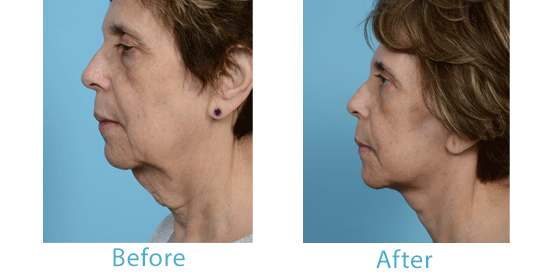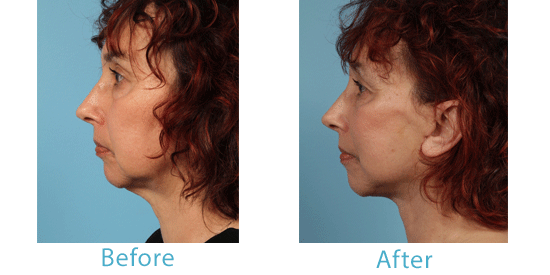No one is immune to the effects of gravity, time, and the elements. As we age, these effects result in volume loss, lines, and sagging skin, particularly on the face and neck. While a facelift is the gold standard for restoring a more refreshed, relaxed appearance, some patients might be best served by a mini facelift. As a plastic surgeon in Chicago, I find patients are often initially unfamiliar with the distinctions between these 2 similar procedures.
To help you better understand the procedures and determine which may be more effective for your concerns, I’ll explain 5 criteria that differentiate the 2 approaches.
Facelift and Mini Facelift Surgical Process
During both a mini and full facelift, the underlying muscles and fatty tissues are repositioned to create the most natural-looking results. Rather than simply tightening the skin of the face, which can produce a “pulled look,” I restore the underlying muscular system and tissues to their youthful positions, then re-drape the skin. A mini facelift targets the same tissues as a full facelift, however a full facelift may involve a more significant degree of tightening and repositioning to correct more advanced symptoms of aging. Both procedures require patients to receive local anesthesia with sedation.
How Recovery Times Differ
The recovery time for a full facelift ranges from 10 to 14 days, depending on the patient’s particular surgery and their body’s ability to heal. The healing process includes some swelling, bruising, and tenderness in the face. During this time, patients may use ice packs to reduce swelling and prescribed pain medication to manage discomfort.
The recovery from a mini facelift is slightly shorter than that of a full facelift, and you can read more about it in this Healthline article. Though patients will still experience some slight bruising and swelling with a mini facelift, they typically return to work, exercise, and other activities within 7 days. With the advanced surgical techniques I utilize, the swelling, discomfort, and other symptoms of recovery are minimized on most of my mini and full facelift patients. This allows for safer healing and quicker results.
Differences in Incision Placement
During a mini facelift, incisions are placed behind the ears, near the hairline. The incisions are small and many patients find that they are easily hidden by their hair, and that they fade quickly. Incisions for a full facelift are placed in a similar location. Because the surgery is more extensive, additional incisions will be placed just on the hairline above the ears, behind the ear, or wrapping slightly around the ear. The exact placement will depend on the individual patient and his or her aesthetic goals. However, all incisions will still be hidden by the hairline or ear as much as possible, and with proper post-op care, the scars will fade very nicely. By looking through my patient photo gallery you can see that scar visibility in the “after” photos (see below) is very minimal.
Longevity of Results
While both a full or mini facelift cannot completely stop the process of aging, they can create a noticeable result that often makes patients appear 5 to 10 years younger and more refreshed. The full facelift provides more effective results throughout the entire face, while the mini facelift provides results mainly in the midface region. Results last several years and may be touched up at a point in the future. For example, a patient may undergo a full facelift and return to me many years later for a mini facelift which will treat recently developed signs of aging. You can read more about how long facelift results last in this related blog post.
Compatibility With Other Procedures
Both full and mini facelift procedures can be combined with other treatments, such as eyelid surgery or dermal fillers, for enhanced results. While the facelift will create an overall rejuvenated appearance in the middle and lower face, other treatments may address specific concerns, like drooping skin on the upper eyelids, or loss of facial volume. While it is often beneficial to combine procedures, my priority is to ensure my patients’ results look subtle and natural.
While there are some significant and some subtle differences between mini and full facelifts, the most important consideration is the need of the patient. Some patients’ concerns can be treated with a mini facelift, while others have more extensive signs of aging and require a full facelift to meet their goals. Either way, I will work with the patient to determine the exact areas of concern and address them thoroughly for a natural result that makes them appear as a more refreshed version of themselves.
A full facelift and a mini facelift each offers its own benefits. I’m happy to discuss which option will provide the results you desire at your consultation. You can request a consultation using our online form or call us at (312) 788-2560 to book an appointment.




Leave a Reply